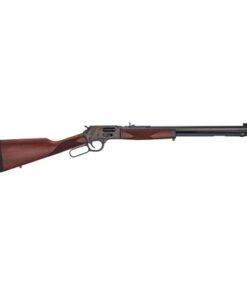Lever Action Rifles for Sale | Cheap Lever Action Rifles online
Lever Action Rifles for Sale | Cheap Lever Action Rifles online. Lever action is a type of action for repeating firearms that utilizes a manually operated cocking handle located near (or often integrated into) the trigger guard area that pivots forward to move the bolt via internal linkages, feeding and extracting cartridges into and out of the chamber, as well as cocking the firing pin mechanism.
This is in contrast to other recurring operations such as bolt-action, pump-action, semi-automatic, or automatic/selective-fire. A firearm that utilizes this operating mechanism is referred to informally as a levergun.
Although the majority of lever-action weapons are rifles, certain lever-action shotguns and pistols have been produced. Although the Winchester Model 1873 rifle is one of the most renowned lever-action rifles, numerous other manufacturers (particularly Henry and Marlin) offer lever-action rifles as well. Lever Action Rifles for Sale | Cheap Lever Action Rifles online
From 1883 through 1885, even Colt’s Manufacturing Company manufactured the 6403 lever-action Colt-Burgess rifles. Mossberg manufactures the Mossberg model 464 in centerfire configuration. 30-30 and rimfire are also available. 22. Lever Action Rifles for Sale | Cheap Lever Action Rifles online.
How is a lever-action rifle defined?
A lever-action rifle, as the name implies, is constructed around an action that needs the use of a lever. This lever is normally located on the rifle's bottom, near the trigger guard, and slides downward. Rifles with Lever Action
Why should you purchase a Marlin lever action rifle?
Marlin lever action rifles have established a worldwide reputation for producing exceedingly high-quality rifles in a variety of designs and calibers. Lever action rifles Marlin - McAvoy Guns
Which model ml-22 lever action rifles are the best?
Miroku (Browning) ML22 Grade II Lever Action Rifle in 22lr 22 Short/22 Large 22 S/L/LR; blued,... New, Laminate Pistol Grip Stock, 6 Round Magazine, with XS Lever Rail included.... 45-70 Marlin 1895 ABL. Limited Edition Rifle. Grey laminated stock and forearm with a black 18" barrel. Rifles with Lever Action for Sale
Is the lever action rifle still useful in the modern era?
They are as relevant and popular now as they have been for the last 50 years. What are the Advantages and Disadvantages of a Lever Action Rifle? A lever action rifle has a rich history – The lever action rifle is an iconic emblem of America with a more than century-long history ( 3 ).
How is a lever action rifle defined?
Hunting Equipment For more than a century and a half, lever action rifles have been ingrained in the fabric of the United States. In historical terms, no other rifle comes close to challenging them as the uncontested king of deer hunting. However, the lever action rifle is more than a superior hunting weapon.
How is a lever action different from a bolt action?
Lever action rifles include a two-piece stock, a tubular magazine in the barrel, rear locking lugs, and a trigger pull that is often not as smooth as bolt action rifles. Nonetheless, many of these shortcomings may be overcome with experience and excellent optics.
How many distinct varieties of lever-action rifles are there?
Although the majority of lever-action weapons are rifles, certain lever-action shotguns and pistols have been produced. Although the Winchester Model 1873 rifle is one of the most renowned lever-action rifles, numerous other manufacturers (particularly Henry and Marlin) offer lever-action rifles as well.
Do lever-action rifles make decent hunting guns?
A lever gun is a helpful weapon in any hunting circumstance when used with modern bullets, powder, and actions. Particularly when considering large bores such as the 45-70 and 450 Marlin. Browning's elegant lever-action rifles are chambered in.308 Winchester and.243 Winchester.
History of Lever Action Rifles for Sale
Cesar Rosaglio invented a lever-action revolver capable of firing six rounds in less than six seconds in 1826
Rifle Colt-Burgess
The earliest lever-action rifles on the market were very certainly the Colt's 1st and 2nd Model Ring Lever rifles, both cap and ball rifles, manufactured between 1837 and 1841 by the Patent Arms Manufacturing Co. of Paterson, New Jersey-Patent. Colt's Prior to the trigger, the ring lever was situated. When pushed, this loading lever would index the cylinder to the next position and cock the concealed internal hammer.
Rifle Colt Paterson Ring Lever
Numerous lever-action designs, like the Volcanic pistol, were invented before to the American Civil War, but the Spencer repeating rifle and Henry rifle, both of which were created in 1860, were the first important designs. Christopher Spencer invented the Spencer, a lever-action rifle with a detachable seven-round tube magazine.
Over 20,000 were produced, and it was accepted by the United States and utilized throughout the American Civil War, marking the first time in history that a government adopted an infantry and cavalry rifle with a detachable magazine.
The lever on the early Spencer's rifles was used to open the action and chamber a fresh cartridge; the hammer had to be cocked individually after chambering.
Benjamin Tyler designed the Henry rifle. Henry, a gunsmith hired by Oliver Winchester, favored a centrally situated hammer that was cocked by the bolt's rearward movement over the offset hammer seen in muzzle-loading rifles.
Henry also positioned the magazine behind the barrel rather than in the buttstock, a position that has been retained by the majority of tube magazines ever since.
The inside of the Marlin 39A receiver
John Marlin, a founder of Marlin Firearms Company in New Haven, Connecticut, developed the Model 1881 as the company's first lever-action repeating rifle. This was chambered in 45/70 and 38/55 rounds. It was succeeded by the 1895 solid top design, which is now referred to as the Marlin 336. Additionally, it spawned the Marlin Model 1894, which is still in production today.
By the 1890s, lever actions had developed into a design that would last for more than a century. In 1894, both Marlin and Winchester introduced new lever-action rifle models. The Marlin rifle is still manufactured, although the Winchester 94 was discontinued in 2006. While the Marlin and Winchester rifles seem identical on the outside, they are fundamentally different on the inside.
The Marlin's lever action is single-stage, but the Winchester's lever action is double-stage. When the Winchester lever is depressed, the whole trigger group descends to free the bolt, which then slides rearward to eject the expended cartridge.
Rifle Savage Model 99
After developing the successful hammerless Models 1895 and 1899 (which became known as the Model 99) lever-action sporting rifles, the young Savage Arms Company gained widespread recognition. The Models 1895/99 were manufactured from its inception in 1899 until the Model 99 was discontinued in 2000 due to the high cost of manufacturing and waning interest in lever-action rifles beginning in the 1950s.
Unlike the majority of Winchester and Marlin lever-action rifles, which utilized a tubular magazine and required round or flat tip bullets, Arthur Savage's gun had a rotating magazine.
This enabled the 99 to fire cartridges with spitzer-pointed bullets, which provided superior ballistic performance. The 99 was available in a variety of cartridge configurations and model variants.
The latter versions did away with the prohibitively costly rotary magazines in favor of a detachable box magazine. Despite this, the Model 99 remained too costly to manufacture in comparison to other lever-action rifles, and when coupled with the affordability of the Savage bolt-action rifle, the Model 99 was retired.
In the 1990s, Sturm Ruger and Company released a variety of novel lever-action designs.
Utilization in combat
The Henry Lever Action rifle was employed in the American Civil War and in the United States until it was supplanted by the Winchester Model 1866 rifle. Additionally, the Spencer repeating rifle was utilized throughout the American Civil War. Additionally, rifles with lever-action designs were heavily utilized by irregular troops during the Spanish Civil War in the 1930s.
Typically, they were Winchesters or Spanish-made Winchester replicas. The Soviet Union is believed to have supplied at least 9,000 Model 1895 rifles to the Spanish Republicans in 1936 for use in the Spanish Civil War. Both the Russian Empire and the United States militarily adopted the Winchester Model 1895.
Shotguns
A recreation of the Winchester Model 1887 lever-action shotgun in the current day.
Early efforts at repeating shotguns were generally bolt-action or lever-action designs, clearly inspired by the repeating rifles of the day. The first successful repeating shotgun was the lever-action Winchester Model 1887, which was created by John Browning for the Winchester Repeating Arms Company in 1885.
Despite Browning's concerns that a slide action design would be more superior for a shotgun, the lever-action design was selected for brand identification considerations. Initially chambered for black powder shotgun rounds (as was customary at the time), the Winchester Model 1887 inspired the Winchester Model 1901, a reinforced variant chambered for 10ga smokeless powder shells.
Their popularity dwindled with the advent of slide-action shotguns like as the Winchester Model 1897, and manufacture ceased in 1920. Armi Chiappa in Italy, Norinco in China, and ADI Ltd. in Australia create modern copies. Until 2006, Winchester manufactured the.410 bore Model 9410, which is essentially a Winchester Model 94 chambered for.410 bore shotgun ammunition.
Pump and semi-automatic actions are severely regulated under Australian firearms legislation. Lever operation comes within a more permissive category, which explains its recent appeal in that nation.
The M1895 Colt–Browning machine gun is a one-of-a-kind example of lever-action reloading on automatic guns. This weapon included a swinging lever under the barrel that was activated by a gas leak in the barrel, allowing the breech to be unlocked for reloading.
This one-of-a-kind action earned the weapon the moniker "potato digger," since the lever swung each time the weapon fired, digging into the ground if the weapon was not mounted high enough.
Cartridges
Cartridges for lever-action rifles are available in a broad range of calibers, bullet forms, and powder loads. They may be classified into two types: low-pressure cartridges with rounded bullets and high-pressure cartridges with aerodynamic pointed ("spitzer") bullets.
Certain lever-action rifles are not as robust as bolt-action or semi-automatic rifles. The weaker actions use cartridges with a low to medium pressure, which is akin to high-powered handgun ammo. To maximize the energy of the bullet at such low velocity, these weapons often use bigger, heavier rounds than other kinds of rifles.
The most popular cartridge is the.30-30, which Winchester launched with the Model 1894. .38 Special/.357 Magnum,.44 Special/.44 Magnum,.41 Magnum,.444 Marlin,.45-70,.45 Colt,.32-20 Winchester,.35 Remington,.308 Marlin Express,.22 calibre rimfire, and.300 Savage are other popular cartridges.
There is considerable debate about which of these cartridges is safe to use for hunting big animals or predators.
Even in the greatest calibers, the low velocities result in far lower energy than similar Elephant gun cartridges. Even the tiniest cartridges, however, are compatible with lightweight, portable rifles that are ideal for hunting small herbivores, pest management, and personal protection.
Certain more powerful, bigger handguns (often revolvers) take certain of these cartridges as well, allowing for the employment of the same ammo in both pistol and rifle. The larger barrel and improved accuracy of the rifle enable faster velocity, longer ranges, and a broader variety of game.
Several of these cartridges (for example, the.45-70) are evolutionary offspring of extremely early metallic black powder cartridges. When metallic cartridges and lever actions were produced, very compact, portable kits for hand reloading and bullet molding were developed (so called "cowboy reloading kits").
These kits are still available for the majority of lever-action cartridges with a low operating pressure.
Lever-actions with more strength, such as the Marlin Model 1894 action, can fire high-pressure cartridges. Lever-action designs equipped with robust, rotating locking bolts (such as the Browning BLR's seven locking lugs) allow for the safe use of very powerful cartridges such as the.300 Winchester Magnum,.300 WSM, and 7 mm Remington Magnum. Additionally, tilting block designs such as the Savage Model 99 are capable of withstanding high pressures.
Numerous lever-action rifles use a tube magazine behind the barrel. To ensure their safety, these cartridges include rounded tip bullets and some use rimfire primers rather than centerfire primers. The safety concern is the direction in which long-range aerodynamic supersonic bullets are fired.
The tips of a tubular magazine may mistakenly discharge centerfire cartridges. A related issue is that certain pointed bullets have delicate tips and might be destroyed when being loaded in a tubular magazine. Certain lever actions, like as the Savage Model 99, accept magazines in either box or rotary format.
Additionally, the Winchester Model 1895 has a box magazine and is chambered for.30-06 and other strong military cartridges. Recent developments include the development of spitzer rounds with elastomeric tips.
Lever-action shotguns such as the Winchester Model 1887 fired 10 or 12 gauge black powder shotgun rounds, while the Model 1901 fired 10 gauge smokeless shotshells. Modern replicas are chambered for 12 gauge smokeless rounds, whereas the Winchester Model 9410 shotgun has a.410 barrel.
Comparing lever-action rifles to bolt-action guns
This article provides a list of advantages and disadvantages, which is sometimes unsuitable. Please contribute to its improvement by including both viewpoints into a more balanced presentation, or by removing this template if you believe a list of this kind is acceptable for this page. (2021, June)
Toggle-lock Henry rifle
While lever-action rifles have long been popular among hunters and recreational shooters, the military has been slow to embrace them. Numerous justifications have been advanced for this.
One key reason for this is because it is more difficult to shoot a lever-action rifle from the prone position than it is to fire a straight-pull or rotating bolt bolt-action rifle.
While lever-action rifles often have a faster rate of fire than bolt-action rifles, this was not always the case. Until roughly the turn of the nineteenth century, most armies were concerned of excessive round consumption, fearful that it would place a burden on logistics and military industry.
Tubular magazines, similar to those used on the first bolt-action rifle and still used on hunting lever-action rifles today, are occasionally described as a problem: while they are incompatible with pointed centerfire "spitzer" bullets developed in the 1890s (aside from recently invented elastomer-tipped ones), lever-action rifles were actually adapted for military use (
Another reason lever-action designs were not widely adopted is their initial inability to fire high-pressure cartridges made feasible by the introduction of smokeless powder in the 1880s. Only low-pressure cartridges could be used safely in toggle-lock lever-action rifles such as the Henry rifle and the Winchester Model 1866, Model 73, and Model 76. (which was used by the mounted police of Canada).
The new lever-action designs, most notably the Winchester Model 1886, Model 92, Model 94, and Model 1895 (in 7.62x54R, a Russian military cartridge), were capable of firing higher-pressure cartridges due to their powerful locking-block action created by John Moses Browning.
Finally, the issue was economic. By the late nineteenth century, military worldwide had adopted inexpensive bolt-action rifles and were hesitant to spend in developing a more costly lever-action rifle.
Lever-action rifles have remained popular for sporting purposes, particularly short- and medium-range hunting in woods, brush, or bushland, due to its faster rate of fire and lower overall length than most bolt-action rifles. Lever-action rifles have also been employed extensively by prison guards in the United States, as well as by wildlife authorities in a number of other countries.
Numerous current lever-action rifles are capable of firing groups smaller than one minute of angle, putting them on par with the accuracy of the majority of modern bolt-action rifles.
Additionally, lever actions, like pump actions, are typically advised as ambidextrous in sports guidebooks.
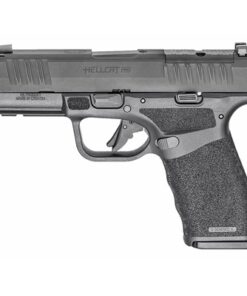 SPRINGFIELD ARMORY - HELLCAT PRO 9MM LUGER HANDGUN
2 × $599.99
SPRINGFIELD ARMORY - HELLCAT PRO 9MM LUGER HANDGUN
2 × $599.99 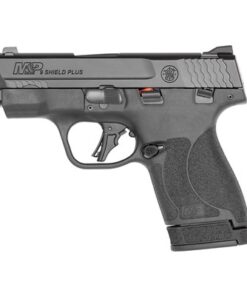 SMITH & WESSON - M&P 9 SHIELD PLUS 9MM TS 10/13 RND 3.1"
2 × $439.99
SMITH & WESSON - M&P 9 SHIELD PLUS 9MM TS 10/13 RND 3.1"
2 × $439.99 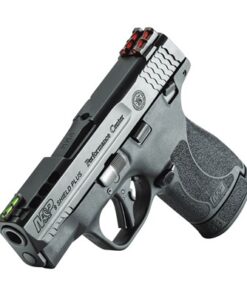 SMITH & WESSON - PC M&P 9 SHIELD PLUS 9MM FIBER OPTIC TS PORTED 3.1"
2 × $529.99
SMITH & WESSON - PC M&P 9 SHIELD PLUS 9MM FIBER OPTIC TS PORTED 3.1"
2 × $529.99 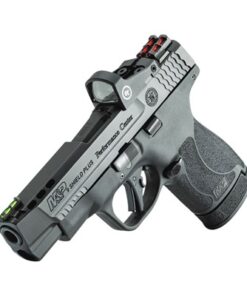 SMITH & WESSON - PC M&P 9 SHIELD PLUS NTS PORTED W/RED DOT 4"
2 × $779.99
SMITH & WESSON - PC M&P 9 SHIELD PLUS NTS PORTED W/RED DOT 4"
2 × $779.99  SMITH & WESSON - M&P 9 SHIELD PLUS 9MM NTS 10/13 RND 3.1"
2 × $439.99
SMITH & WESSON - M&P 9 SHIELD PLUS 9MM NTS 10/13 RND 3.1"
2 × $439.99 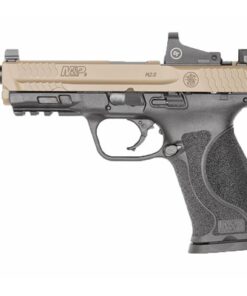 SMITH & WESSON - M&P9 M2.0 9MM OR SPEC KIT, CT RED DOT, W/KNIFE & COIN
2 × $879.99
SMITH & WESSON - M&P9 M2.0 9MM OR SPEC KIT, CT RED DOT, W/KNIFE & COIN
2 × $879.99 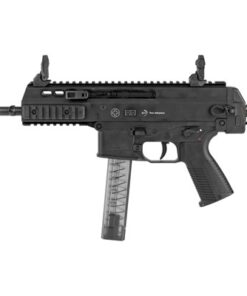 B&T USA - APC9 PRO 9MM
2 × $2,349.99
B&T USA - APC9 PRO 9MM
2 × $2,349.99  SIG SAUER, INC. - P365X 9MM 12+1 OR 3.1" NIGHT SIGHT
2 × $599.99
SIG SAUER, INC. - P365X 9MM 12+1 OR 3.1" NIGHT SIGHT
2 × $599.99 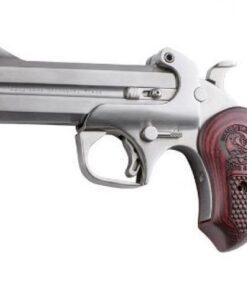 Bond Arms Snakeslayer IV 2RD 410ga/45LC 4.25
2 × $548.45
Bond Arms Snakeslayer IV 2RD 410ga/45LC 4.25
2 × $548.45 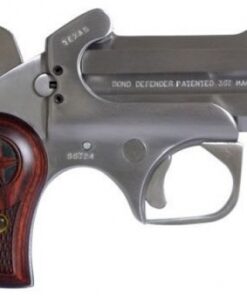 Bond Arms BATD357/38 Texas Defender 2RD 357MAG/38SP 3
2 × $454.55
Bond Arms BATD357/38 Texas Defender 2RD 357MAG/38SP 3
2 × $454.55  Bond Arms BAMB Mama Bear 357 Mag/38 Special Derringer Single .357 MAG 2.5 2
2 × $443.95
Bond Arms BAMB Mama Bear 357 Mag/38 Special Derringer Single .357 MAG 2.5 2
2 × $443.95 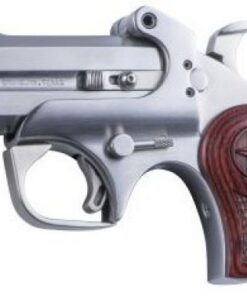 Bond Arms Texas Defender .45LC/.410 3 (BATD45410)
2 × $442.55
Bond Arms Texas Defender .45LC/.410 3 (BATD45410)
2 × $442.55 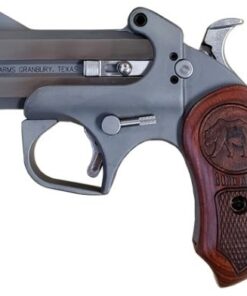 Bond Arms BAGR Grizzly 45 LC/410 3 Rosewood Grips
2 × $343.35
Bond Arms BAGR Grizzly 45 LC/410 3 Rosewood Grips
2 × $343.35  Bond Arms 9mm 3"
2 × $336.55
Bond Arms 9mm 3"
2 × $336.55 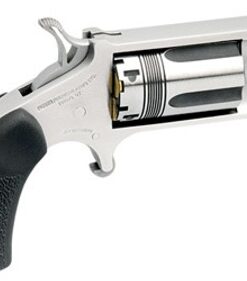 North American Arms (NAA) 22MSCTW .22 MAG Wasp Single 1.13" 5 Bl
2 × $304.85
North American Arms (NAA) 22MSCTW .22 MAG Wasp Single 1.13" 5 Bl
2 × $304.85  Bond Arms BARW 45/410 Rowdy .45 LC .410 GA/.45 LC
2 × $286.85
Bond Arms BARW 45/410 Rowdy .45 LC .410 GA/.45 LC
2 × $286.85  WEATHERBY INC. - SA-08 WATERFOWL 28IN 12 GAUGE REALTREE MAX-5 4+1RD
2 × $700.00
WEATHERBY INC. - SA-08 WATERFOWL 28IN 12 GAUGE REALTREE MAX-5 4+1RD
2 × $700.00  WINCHESTER - SX3 WATERFOWL REALTREE MAX-5 26IN 12 GA 3.5" REALTREE MAX-5 4+1R
2 × $1,000.00
WINCHESTER - SX3 WATERFOWL REALTREE MAX-5 26IN 12 GA 3.5" REALTREE MAX-5 4+1R
2 × $1,000.00  STOEGER IND - M3000 12/28 MAX-5 28IN 12 GAUGE MAX 5 CAMO 4+1RD
2 × $500.00
STOEGER IND - M3000 12/28 MAX-5 28IN 12 GAUGE MAX 5 CAMO 4+1RD
2 × $500.00  STOEGER IND - M3000 12/28 WALNUT 28IN 12 GAUGE BLUE 4+1RD
2 × $500.00
STOEGER IND - M3000 12/28 WALNUT 28IN 12 GAUGE BLUE 4+1RD
2 × $500.00  BENELLI U.S.A. - M2 26IN 20 GAUGE MATTE BLACK 4+1RD
2 × $1,400.00
BENELLI U.S.A. - M2 26IN 20 GAUGE MATTE BLACK 4+1RD
2 × $1,400.00  BENELLI U.S.A. - M3000 SHOTGUN 24" 12GA REALTREE APG
2 × $600.00
BENELLI U.S.A. - M3000 SHOTGUN 24" 12GA REALTREE APG
2 × $600.00 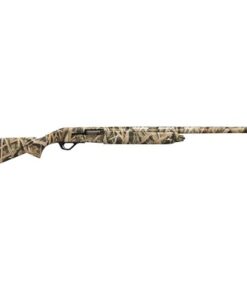 WINCHESTER REPEATING ARMS - SX4 WTFL MOSGB,12-3.5,28 INV+3
2 × $900.00
WINCHESTER REPEATING ARMS - SX4 WTFL MOSGB,12-3.5,28 INV+3
2 × $900.00  KALASHNIKOV USA - KOMRAD 12GA 12.5" W/BRACE
2 × $1,000.00
KALASHNIKOV USA - KOMRAD 12GA 12.5" W/BRACE
2 × $1,000.00  CZ 2075 RAMI 10 RD 9mm Pistol
2 × $600.00
CZ 2075 RAMI 10 RD 9mm Pistol
2 × $600.00  CZ 2075 RAMI BD Pistol 10 RD 9mm Night Sights
2 × $602.00
CZ 2075 RAMI BD Pistol 10 RD 9mm Night Sights
2 × $602.00  CZ 2075 RAMI 14 RD 9mm Pistol
2 × $644.75
CZ 2075 RAMI 14 RD 9mm Pistol
2 × $644.75  CZ 2075 RAMI BD Pistol 14 RD 9mm Night Sights
2 × $699.00
CZ 2075 RAMI BD Pistol 14 RD 9mm Night Sights
2 × $699.00 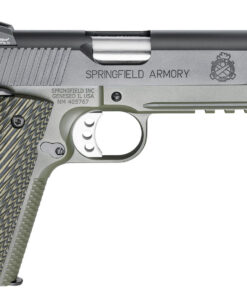 Springfield 1911 Marine Corps Operator 45 ACP with Range Bag and 2 Magazines
2 × $1,399.99
Springfield 1911 Marine Corps Operator 45 ACP with Range Bag and 2 Magazines
2 × $1,399.99 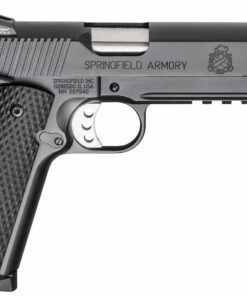 Springfield 1911 Loaded LB Operator 45 ACP with Range Bag and 2 Magazines
2 × $1,399.99
Springfield 1911 Loaded LB Operator 45 ACP with Range Bag and 2 Magazines
2 × $1,399.99  Kimber KHX Custom 9mm with Laser Enhanced Grips
2 × $1,399.99
Kimber KHX Custom 9mm with Laser Enhanced Grips
2 × $1,399.99 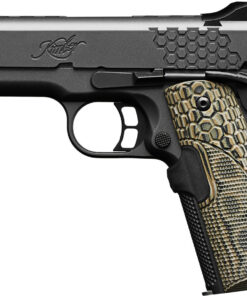 Kimber KHX Pro 9mm with Laser Enhanced Grips
2 × $1,399.99
Kimber KHX Pro 9mm with Laser Enhanced Grips
2 × $1,399.99  Sig Sauer P226 Legion SAO 9mm Centerfire Pistol with ROMEO1 Reflex Sight
2 × $1,399.99
Sig Sauer P226 Legion SAO 9mm Centerfire Pistol with ROMEO1 Reflex Sight
2 × $1,399.99  Sig Sauer P229 Legion 9mm Centerfire Pistol with ROMEO1 Reflex Sight
2 × $1,399.99
Sig Sauer P229 Legion 9mm Centerfire Pistol with ROMEO1 Reflex Sight
2 × $1,399.99  Sig Sauer P226 Legion RX 9mm with ROMEO1 Reflex Sight
2 × $1,399.99
Sig Sauer P226 Legion RX 9mm with ROMEO1 Reflex Sight
2 × $1,399.99 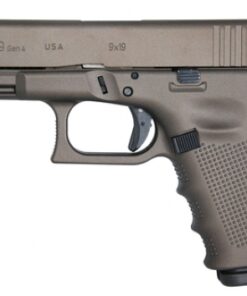 GLOCK GEN4 19 9MM 4 FX TBR US 15
2 × $599.00
GLOCK GEN4 19 9MM 4 FX TBR US 15
2 × $599.00  GLOCK GEN4 19 9MM 4 FX BGSS 15
2 × $581.30
GLOCK GEN4 19 9MM 4 FX BGSS 15
2 × $581.30  GLOCK GEN4 19 9MM 4 FXS BB US 15
2 × $549.99
GLOCK GEN4 19 9MM 4 FXS BB US 15
2 × $549.99 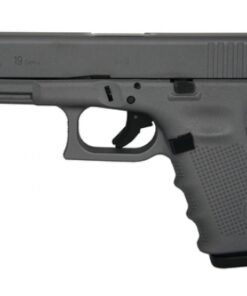 GLOCK GEN4 19 9MM 4 FXS TG US 15
2 × $549.99
GLOCK GEN4 19 9MM 4 FXS TG US 15
2 × $549.99 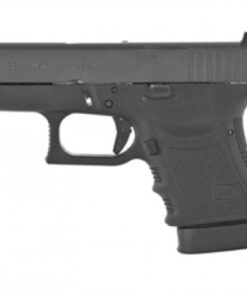 GLOCK M36 45ACP 3.8-DA-FS-6SH
2 × $549.71
GLOCK M36 45ACP 3.8-DA-FS-6SH
2 × $549.71  GLOCK 23 GEN 4 40SW 13RD 4.02
2 × $539.99
GLOCK 23 GEN 4 40SW 13RD 4.02
2 × $539.99  GLOCK 20 10MM 4.60 FS 15RD
2 × $502.80
GLOCK 20 10MM 4.60 FS 15RD
2 × $502.80  GLOCK 23 TALO Gen 4 Semi-Auto Pistol .40 S&W 10 Rounds 4.02
2 × $499.99
GLOCK 23 TALO Gen 4 Semi-Auto Pistol .40 S&W 10 Rounds 4.02
2 × $499.99 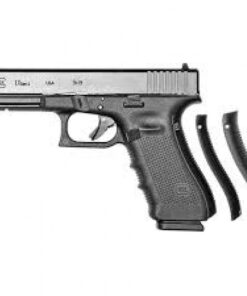 GLOCK G17 9MM GEN4 17RD MY GLOCK
2 × $499.00
GLOCK G17 9MM GEN4 17RD MY GLOCK
2 × $499.00  GLOCK 23 GEN 4 40SW 4.02 3 13RD REBUILT
2 × $628.99
GLOCK 23 GEN 4 40SW 4.02 3 13RD REBUILT
2 × $628.99 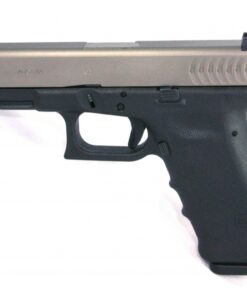 Glock G22 G4 15+1 .40 S&W 4.5 NIB-ONE Coating
2 × $600.00
Glock G22 G4 15+1 .40 S&W 4.5 NIB-ONE Coating
2 × $600.00 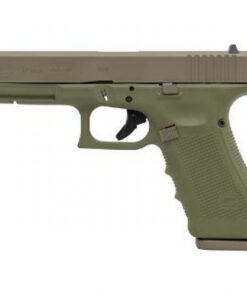 GLOCK 17 GEN 4 9MM 4.49 BAZOOKA GRN/FDE CERAKOTE
2 × $502.86
GLOCK 17 GEN 4 9MM 4.49 BAZOOKA GRN/FDE CERAKOTE
2 × $502.86  Hodgdon Pyrodex Select Black Powder Substitute 1 lb
2 × $29.99
Hodgdon Pyrodex Select Black Powder Substitute 1 lb
2 × $29.99 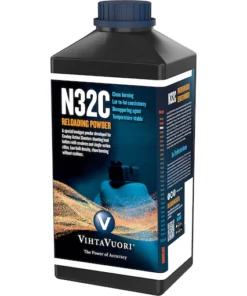 Vihtavuori N32C TIN STAR Smokeless Gun Powder 1 lb
2 × $49.49
Vihtavuori N32C TIN STAR Smokeless Gun Powder 1 lb
2 × $49.49 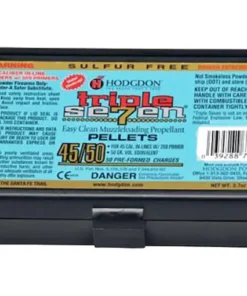 Hodgdon Triple Seven Black Powder Substitute 45 Caliber 50 Grain Pellets Pack of 50
2 × $33.49
Hodgdon Triple Seven Black Powder Substitute 45 Caliber 50 Grain Pellets Pack of 50
2 × $33.49  IMR Enduron 4955 Smokeless Gun Powder 1lb
2 × $43.99
IMR Enduron 4955 Smokeless Gun Powder 1lb
2 × $43.99 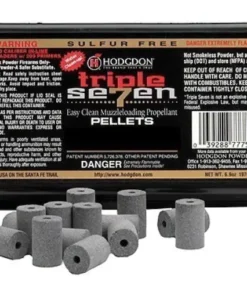 Hodgdon Triple Seven Black Powder Substitute 50 Caliber 30 Grain Pellets Pack of 100
2 × $39.49
Hodgdon Triple Seven Black Powder Substitute 50 Caliber 30 Grain Pellets Pack of 100
2 × $39.49  32 ACP - 71 Grain FMJ - PMC - 50 Rounds
2 × $35.00
32 ACP - 71 Grain FMJ - PMC - 50 Rounds
2 × $35.00 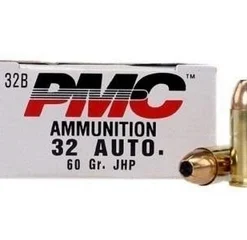 32 ACP - 60 gr JHP - PMC - 50 Rounds
2 × $39.00
32 ACP - 60 gr JHP - PMC - 50 Rounds
2 × $39.00 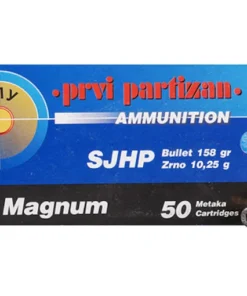 357 Mag - 158 Grain FPJ - Prvi Partizan - 50 Rounds
2 × $52.00
357 Mag - 158 Grain FPJ - Prvi Partizan - 50 Rounds
2 × $52.00 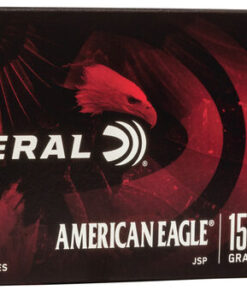 357 Mag 158 Grain JSP Federal American Eagle 50 Rounds
2 × $70.00
357 Mag 158 Grain JSP Federal American Eagle 50 Rounds
2 × $70.00 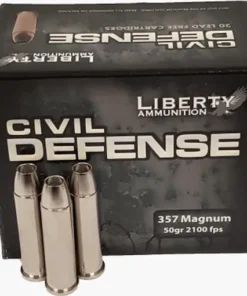 357 Mag - 50 Grain SCHP - Liberty Ammunition Civil Defense - 20 Rounds
2 × $43.00
357 Mag - 50 Grain SCHP - Liberty Ammunition Civil Defense - 20 Rounds
2 × $43.00 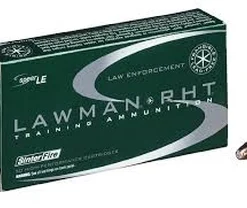 357 Sig 100 Grain Frangible Speer Lawman 50 Rounds
2 × $53.00
357 Sig 100 Grain Frangible Speer Lawman 50 Rounds
2 × $53.00 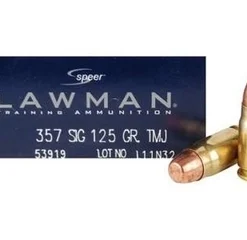 357 Sig 125 Grain TMJ Speer Lawman 50 Rounds
2 × $62.00
357 Sig 125 Grain TMJ Speer Lawman 50 Rounds
2 × $62.00 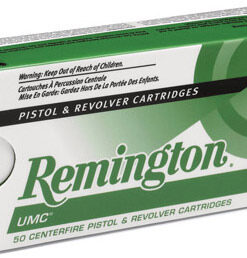 357 Sig 125 Grain MC Remington UMC 50 Rounds
2 × $63.00
357 Sig 125 Grain MC Remington UMC 50 Rounds
2 × $63.00 









